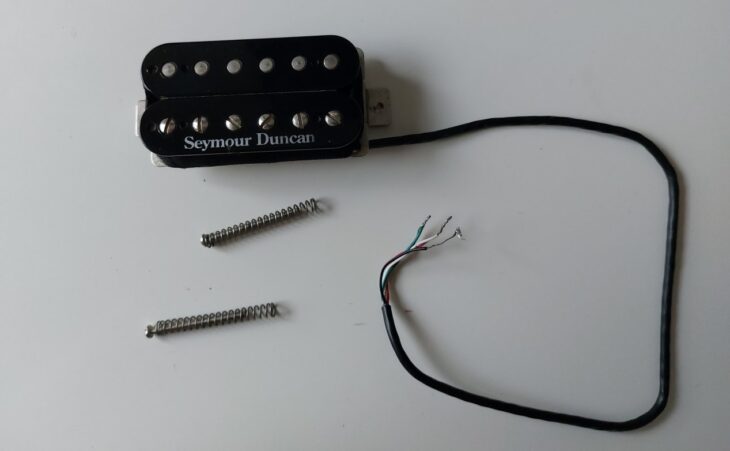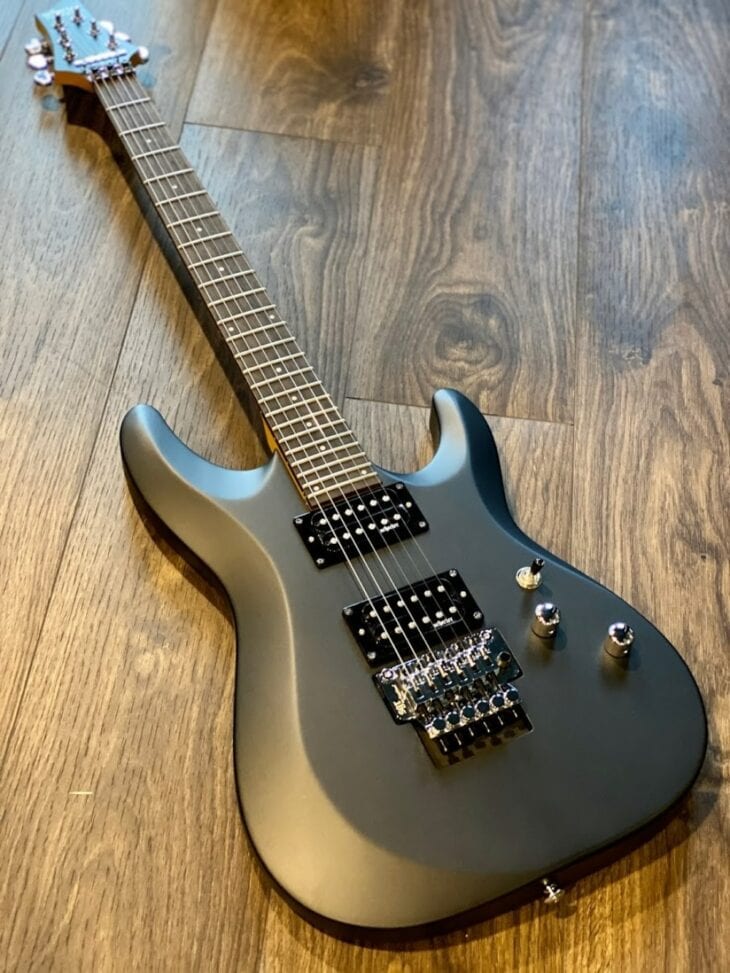Sublime’s unique style of ska punk set them apart from countless imitators in the 1990s. Regardless, commercial success eluded the band until their third album, which tragically became a hit only weeks after the passing of frontman and guitar player Bradley Nowell.
Although the band enjoyed commercial success with songs like “Santeria,” they were unable to tour until reforming, with young gun Rome Ramirez, in the late 2000s.
In this article, I’ll run through Bradley Nowell’s key pieces of gear, focusing on the sound from their hit “Santeria.” Like all true punks, Nowell’s gear choices were affordable and pragmatic, making chasing his tone much easier than with many other guitarists.
Table of Contents
Sublime Guitars
Nowell’s main guitar throughout his career was a custom-made natural-finish instrument creatively dubbed the “Brown Guitar.” It was custom-built for Nowell by a friend of the band, Dan McDonald.
Nailing the exact sound of any guitar is challenging, and even more so when it’s a custom-made instrument. However, by identifying the key features of the instrument, we can find a viable alternative for the modern musician.
The guitar’s body was made from Honduran mahogany and had a maple neck adorned with an ebony fretboard. Its pickups were a Seymour Duncan JB in the bridge and a stock Dean pickup in the neck. Curiously, the guitar featured a shred-ready Floyd Rose bridge.
Honduran mahogany has a typically warm, dry, and mid-heavy tone, balanced by the snap and sparkle of the guitar’s maple neck. To emulate Nowell’s distinctive sound, I’d recommend trying to use a guitar with a mahogany body as well as humbucking pickups, such as the PRS CE 24.
Another option might be the Larry Carlton Strat-style guitar, although this model won’t provide enough output for the Sublime tone, so you’d want to swap in a Seymour Duncan JB in the humbucker position to get more grunt and push from the guitar.

Another great option, albeit one that feels more like a shred guitar than a Sublime guitar, is the Kramer Striker.
Personally, I’m partial to the excellent ESP LTD TE-201, which has a mahogany body, maple neck, and a stunning black satin finish.
If you’re very keen on a Nowell-style bridge, the Schecter Damien might be the one for you. It boasts a mahogany body, maple neck, humbucking pickups, and a stock Floyd Rose bridge for all the dive bombs and whammy tricks you can think of.

Its bat fret inlays and none-more-black finish might get you a few funny looks at ska gigs, but this guitar will definitely do the trick for Sublime tones.
With any of these guitars, particularly those in the lower price ranges, it may be necessary to install aftermarket pickups, as Bradley Nowell did, to improve the guitar’s tone and responsiveness to distortion. The aforementioned Seymour Duncan JB was Nowell’s favored pickup, so that’s my heaviest recommendation if you choose to do a pickup swap.
Sublime Amps
Bradley Nowell was a devoted player of the Mesa/Boogie Triple Rectifier head, coupled with a matching Mesa/Boogie 4×12 cabinet.
These ultra-heavy amplifiers are built to handle powerful, crushing distortion, and they’re popular among metal players for this reason.
Nowell was also known to play a Roland Jazz Chorus for his clean tones, and reportedly used a Marshall JCM800 upon occasion, too.
The “Santeria” tone, to me, sounds more like a Mesa-style saturation than Marshall midrange or a Jazz Chorus. For that reason, my recommendation for capturing the Sublime sound is to either run a Mesa-style amp or a clean-voiced amp with an amp-style pedal.
My main recommendation would be the Mini Rectifier from Mesa/Boogie, as this 25-watt lunchbox head is portable enough to carry in one hand and loud enough to keep up with a full band at rehearsal or gigs. It can also handle power switching down to 10 watts for quieter rehearsals and home practice.

Sublime Amp Settings
To achieve the Sublime tone, I’d run the Mesa/Boogie amp at the below settings. I’ve based these on the guitar sound from “Santeria,” but you can use them for pretty much any Sublime song, especially those from the band’s breakthrough third album.
Volume: 5
You can run your volume relatively low for this sound, as you’re getting plenty of gain from your amp’s gain stage.
Gain: 4-5
Get a nice, thick, mushy distorted tone by turning your gain knob up about halfway.
Bass: 8
You’ll be using a lot of low end with this tone, as Sublime was a three-piece that needed to fill out their sound.
Mids: 5
Don’t be afraid to “scoop” out your midrange for this sound.
Treble: 8-9
With scooped mids comes higher treble: run your treble almost all the way up.
Sublime Pedals
Bradley Nowell achieved his guitar tone with a few choice pedals. Like so many other punks, he eschewed the elaborate, effects-laden tones of ’80s shredder for a more back-to-basics tone that relied on a few simple sounds.
This was driven partially by the fact that, by his own admission, Nowell expected Sublime to play “backyard parties” for the duration of their career. Accordingly, his choice of pedals was very simple, and very portable.
Nowell’s choice of drive for his dirty tone was the Boss OS-2 overdrive/distortion pedal, a rugged, powerful distortion that operates like a combination of two of Boss’ most famous pedals: the Super Overdrive and the Turbo Distortion.

For clean sounds, and some lead parts, Nowell used the Boss Digital Delay. He ran the Boss DD-3 that was popular in the ’90s, but I’d recommend the DD-3T, which includes a very nifty tap tempo feature.
These are the only pedals you need for the Sublime tone, and they’re available at pretty much any guitar store.
Final Word
Sublime’s powerful, instantly recognizable guitar sound is a very achievable tone if you have the right gear. All you really need is a reliable humbucker-equipped guitar with similar tonewoods to Nowell’s own custom job, a Mesa-style amp, and a few choice guitar pedals.


Thanks for the helpful rundown. For what it’s worth, your lead photo shows Nowell playing through what looks like a Boogie Mark II or IV, not a rectifier.